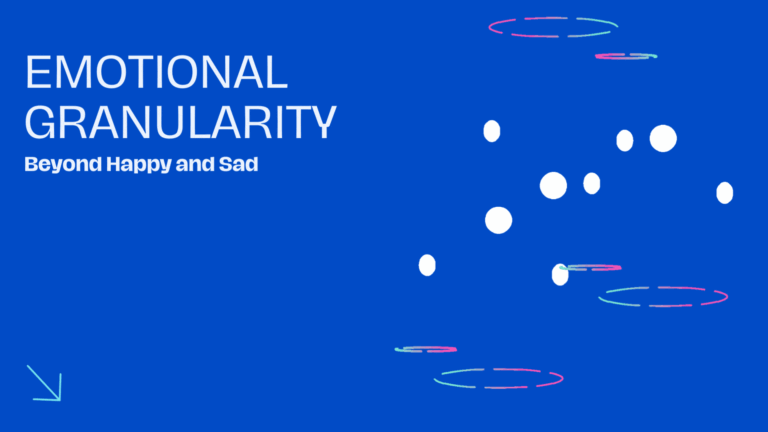The Future of Wellbeing Communities Trends and Predictions
The wellness industry is booming and the future looks bright. With an estimated value of $1.5 trillion, this industry has been on a steady rise around the world. Wellness goes beyond fitness and nutrition; it encompasses all aspects of our lives that contribute to our overall health and wellbeing, from mental health to social and emotional wellbeing. In this article, we will explore the trends and predictions for the future of wellbeing communities.
What is the Wellness Industry?
Defining Wellness
Before we delve into the wellness industry, let us first define wellness. Simply put, wellness is a state of being healthy and happy in mind and body, achieved through proactive behaviours that improve overall health and wellbeing.
The Wellness Market
The wellness market encompasses all products and services that people use to improve their health and wellbeing. This market has been expanding rapidly over the past few years, largely due to increased awareness and interest in personal wellness. McKinsey reports that consumers around the world are more invested in health and wellness products and services than ever before.
Global Wellness Statistics
The global wellness market is expected to grow even further in the years to come, reaching $4.753 trillion by 2027. Recent trends show that consumers are increasingly investing their time and money into wellness experiences, from mindfulness to fitness classes and even virtual reality workouts like those offered by Peloton. In fact, 77% of adults in the US said they believe that wellness is important.
Wellness Trends to Watch in 2021 and 2022
The Evolution of Health and Wellness
The future of wellness is not just about physical fitness or nutrition. Rather, it encompasses all aspects of our lives that contribute to our overall wellbeing. The shift towards holistic wellness has been ongoing for several years now and will continue in 2021 and 2022.
The Future of Wellness
The future of wellness will include an increased use of technology, like augmented reality and virtual coaching, to personalize health and wellness regimens. People will also demand better and more personalized health and wellness products and services. The use of data and predictive analytics will also play a vital role in the wellness industry, which will result in more personalized treatment plans tailored to individual needs.
8 Predicted Wellness Trends
The predicted wellness trends for 2021 and 2022 include the use of the metaverse to create immersive wellness experiences, the rise of wellness brands and influencers, and a shift towards more personalized wellness regimens that take into account factors like genetics and gut health. Other trends to watch include the use of AI to improve mental health through virtual counseling and the rise of mindfulness meditation.
Importance of Global Wellbeing Communities
What is Wellbeing?
Wellbeing is the state of being comfortable, healthy, or happy. It is a holistic concept that includes physical, mental, and emotional health, social and environmental wellbeing, and spiritual wellness.
The Impact of Wellbeing on the World’s Health
The rise of wellbeing communities has made a great impact on the world’s health by promoting a holistic approach to wellbeing. These communities have brought people together to share information, experiences, and support each other towards better health. This approach has led to an improved quality of life for people worldwide.
The Rise of Wellbeing Communities
With the rise of wellbeing communities, people can join groups that share common wellness goals or interests, like yoga or nutrition. These communities offer a sense of belonging and support that contribute to overall wellbeing. They also provide opportunities for people to connect with others and share knowledge and experiences.
The COVID-19 Pandemic’s Impact on the Wellness Industry
Changes to In-Person Wellness Offerings
The COVID-19 pandemic has had a significant impact on the wellness industry, particularly in-person wellness offerings. Many gyms and fitness studios have closed, and group fitness classes are now held virtually. Additionally, many wellness resorts and retreats have had to close or limit their offerings.
The Shift to Omnichannel Wellness Offerings
The pandemic has also forced wellness companies to shift towards omnichannel wellness offerings. This approach incorporates both in-person and virtual experiences, allowing people to participate in fitness classes or receive coaching from the comfort of their own homes.
The Importance of Partnerships in the Wellness Industry
The COVID-19 pandemic has highlighted the importance of partnerships in the wellness industry. Companies must work together to provide innovative solutions that address the changing needs of consumers. This includes working with technology companies to provide more virtual wellness offerings and partnering with healthcare providers to offer more personalized health and wellness services.
The Future of Wellbeing Communities
The Post-Pandemic Wellness Industry
The wellness industry has been greatly impacted by the COVID-19 pandemic, but it is poised for growth in the post-pandemic world. The focus on personal wellbeing has only increased, and as people continue to invest in their health and wellbeing, the wellness economy will continue to grow.
Redefining Wellness and Wellbeing
The future of wellness will focus on redefining the industry and its offerings. It will involve incorporating new technologies, like AI and blockchain, to create a more sophisticated and personalized approach to wellness. Additionally, the wellness industry will expand to include new areas like social and emotional wellbeing.
Innovations in the Wellness Industry
The future of wellbeing communities will include innovations that promote a holistic approach to wellness. This will include advancements in personalized health and wellness treatments, virtual experiences, and a greater focus on social wellbeing. Furthermore, the role of partnerships and collaboration will continue to be important to the wellness industry moving forward.
The future of wellbeing communities is bright, and as people continue to invest in their health and wellbeing, we can expect to see continued growth and innovation in the industry. With a renewed focus on holistic wellness and the use of technology to personalize health and wellness regimens, the wellness industry will continue to make great strides towards helping people achieve better health and happiness.
Q: What is the topic of this FAQ?
A: This FAQ is about the future of wellbeing communities trends and predictions.
Q: What are the main terms related to this topic?
A: The main terms related to this topic are wellness market, health and wellness, global wellness, future of wellness, and 8 trends.
Q: How big is the global wellness economy?
A: The global wellness economy is valued at $1.5 trillion.
Q: What is the wellness space?
A: The wellness space is a term used to describe the industry and market focused on health and wellness products, services, and experiences.
Q: How much is the average wellness spending per person worldwide?
A: The average wellness spending per person worldwide is around $1,100.
Q: Is the wellbeing community considered a part of the wellness industry?
A: Yes, the wellbeing community is part of the wellness sector, which covers a broad range of businesses and organizations focused on health and wellness.
Q: What are wearables?
A: Wearables are electronic devices that can be worn on the body, such as fitness trackers, smartwatches, and health monitors.
Q: What is the future of wellness?
A: The future of wellness will be shaped by many trends, including a greater focus on mental wellness, consumer interest in health information, and the prioritization of wellness by healthcare systems and consumers in every market.
Q: Will there be a substantial increase in consumer health technology over the next few years?
A: Yes, there is likely to be a substantial increase in consumer health technology over the next few years, as individuals become more interested in personal health outcomes and healthcare professionals begin to prioritize wellness.
Q: Will smartphone apps continue to be a major part of the wellness industry?
A: Yes, smartphone apps are expected to continue to play a major role in the wellness industry, as consumers increasingly use mobile devices to manage their health and wellness.
Q: Do people tend to purchase wellness products based on an influencer’s recommendation?
A: Yes, influencers are having an increasing impact on the wellness market and many consumers will purchase based on an influencer’s recommendation.












